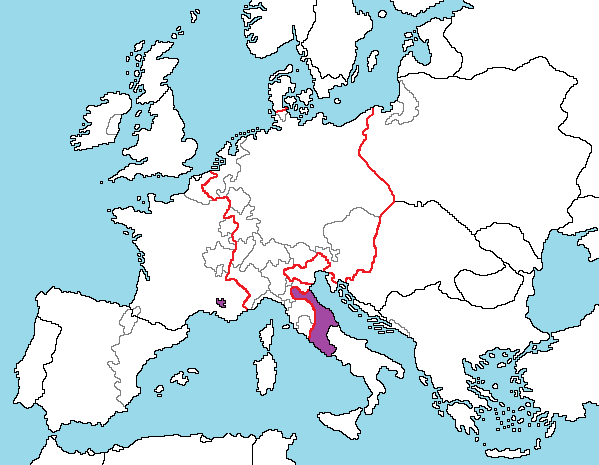THE PAPAL STATES IN 1525

The Papal States in 1525
Since the end of the ancient Roman Empire, the popes had ruled the city states and petty dukedoms of central Italy as feudal overlords and these Papal States drove a broad wedge between the imperial territories in Northern and Southern Italy.
The strategic importance of the Papal States to the Holy Roman Empire caused centuries of friction between the popes and emperors. The French, and Spanish also coveted the wealth of Italy and the result was an interminable series of wars in which the popes tried to preserve their independence by creating complex systems of alliances and then breaking them. In return, the kings of Europe tried to place their own candidates the throne of St Peter.
Though Clement VII, who secured election to the papacy in 1523, was the Hapsburg's preferred candidate he followed the centuries old tradition of papal duplicity and he repeatedly allied himself with the emperor's French and Venetian enemies whenever the circumstances suited him. This policy ultimately proved to be Clement's downfall,and Rome was sacked by an imperial army in 1527, but the Papal States continued as a political entity until the unification of Italy in the 19th Century.